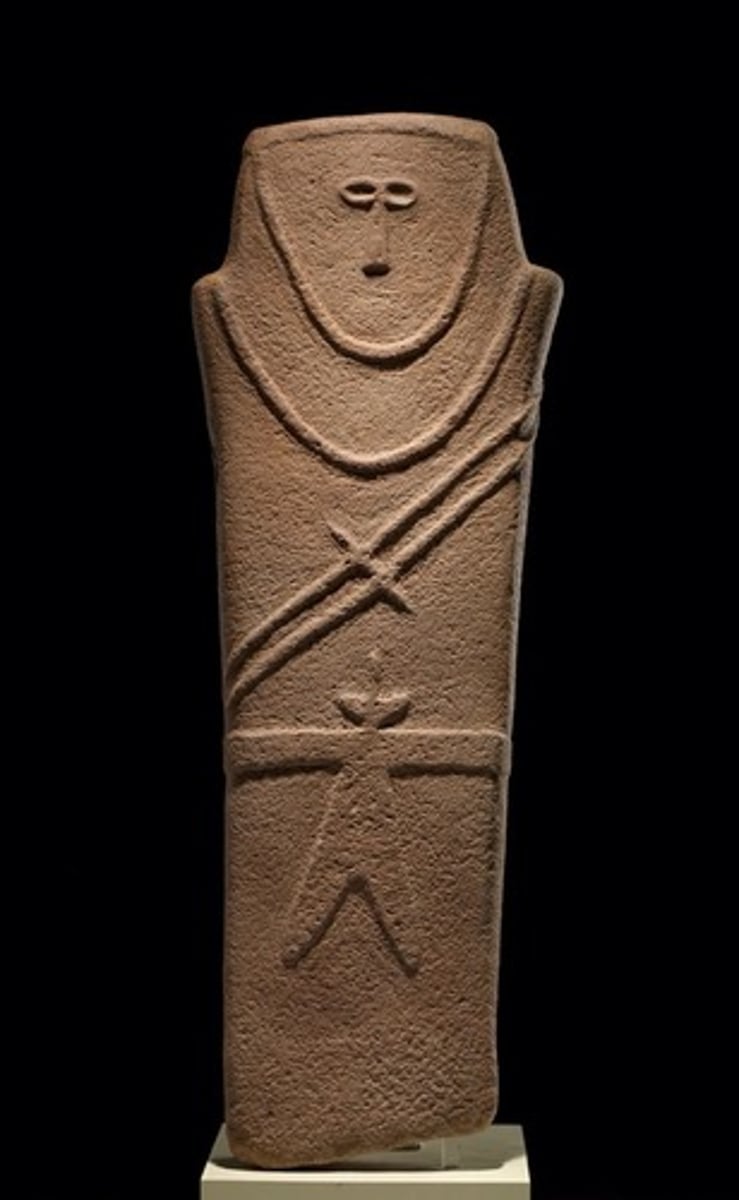Unit 1 Progress Check: MCQ Ap Art History
1/19
There's no tags or description
Looks like no tags are added yet.
Name | Mastery | Learn | Test | Matching | Spaced |
|---|
No study sessions yet.
20 Terms
The work shown was created during the prehistoric period in what is now called
Liangzhu, China
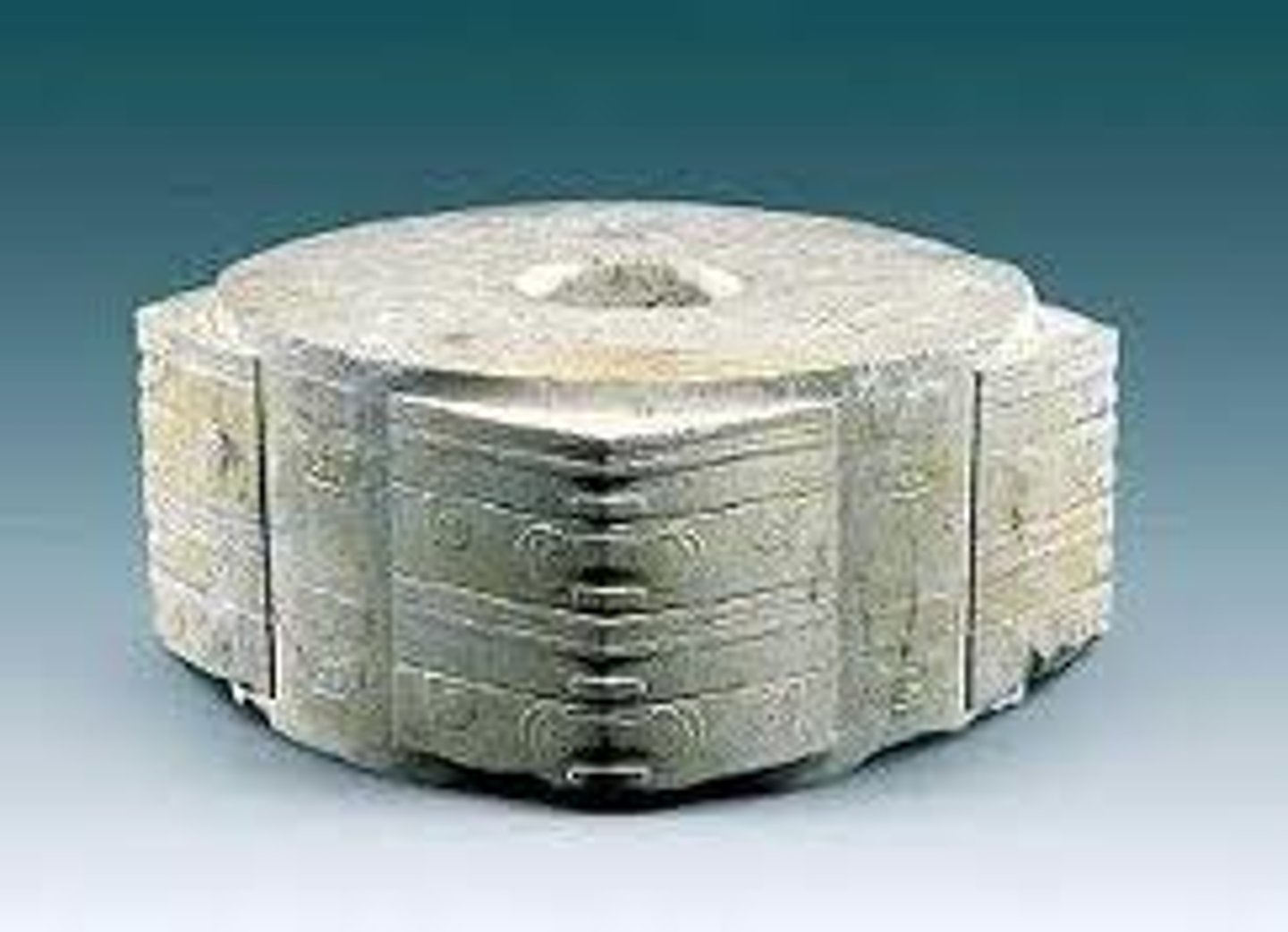
The work was created by manipulating which of the following materials?
A difficult-to-carve mineral called jade, formed using precise sanding techniques
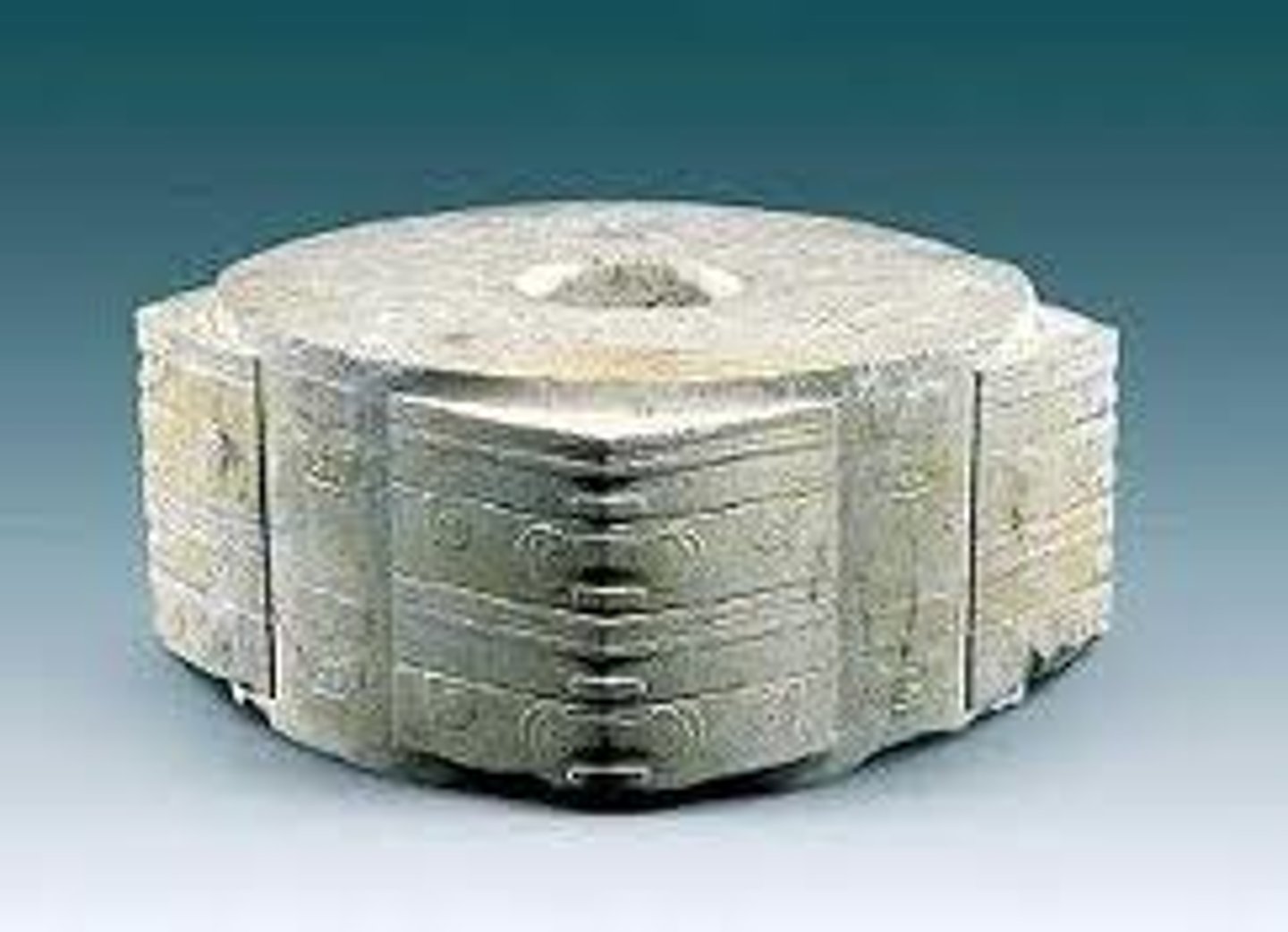
Works such as the one shown have been discovered primarily in
gravesites, where they were likely placed as part of funerary practices
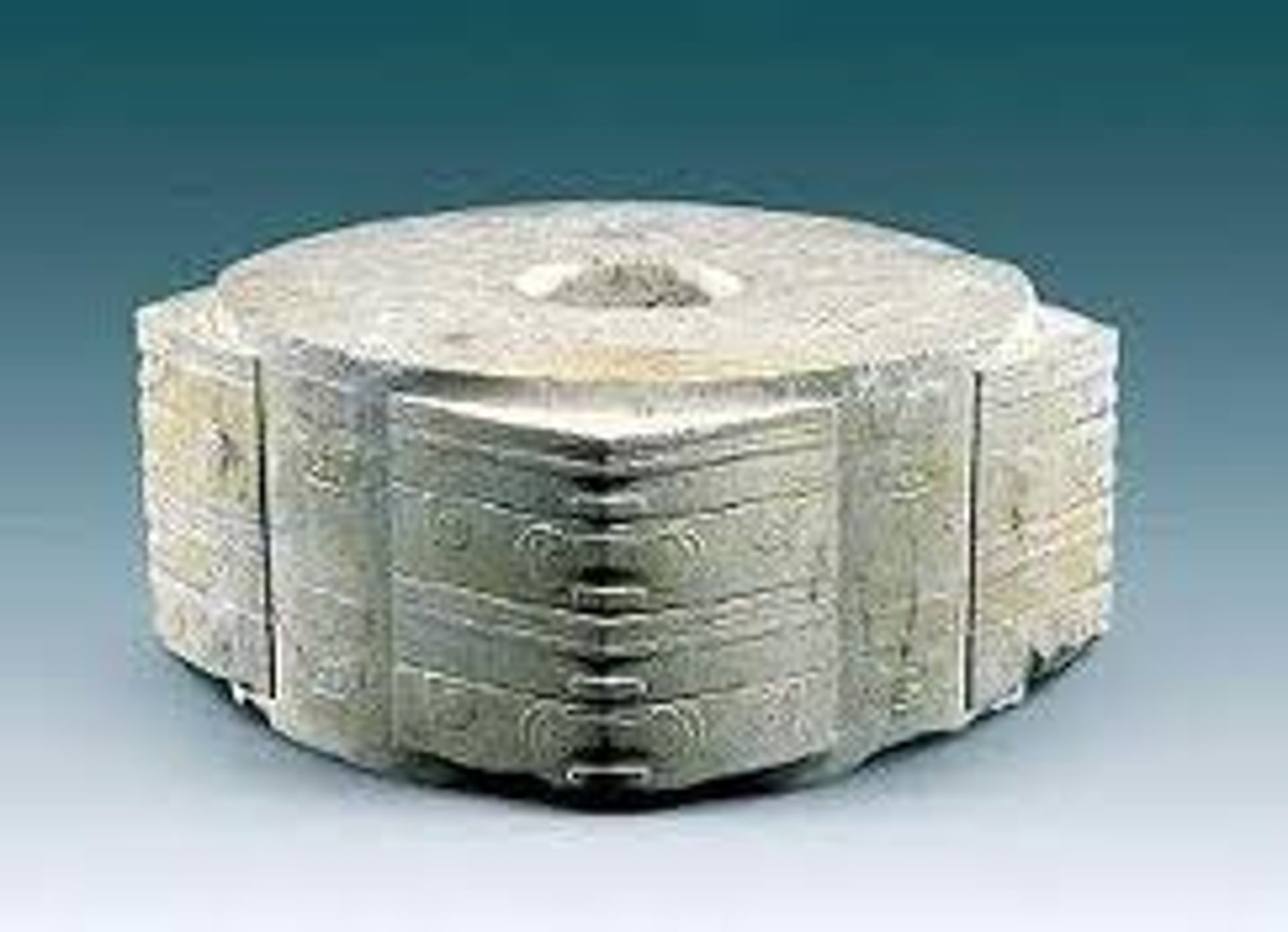
While the exact function and meaning of such works remain unknown, scholars have theorized that they were intended to facilitate a connection between the physical and spiritual worlds because of the
interlocking square and cylindrical forms, which are believed to symbolize different realms
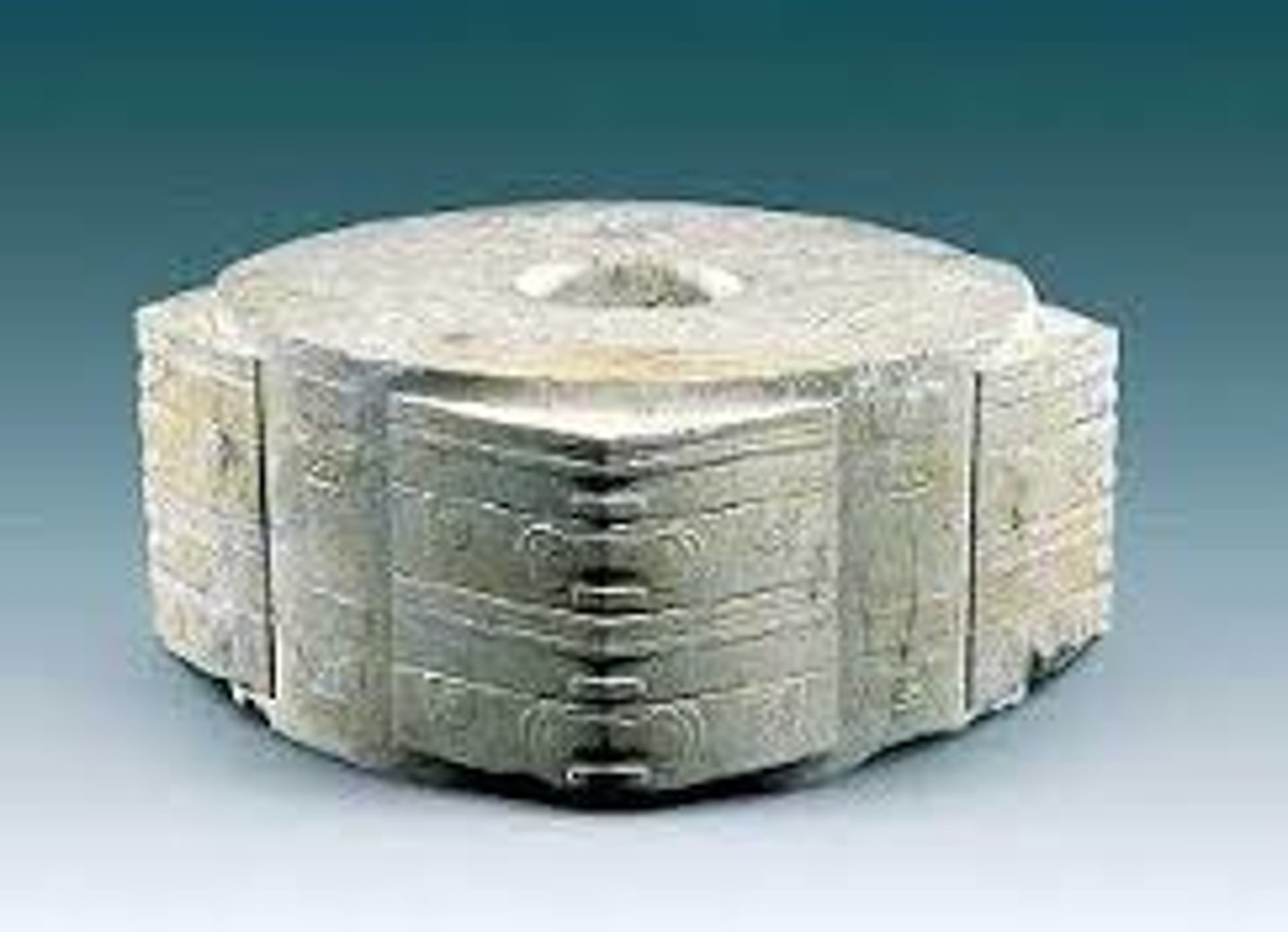
The vessel shown was created using
painted terra cotta
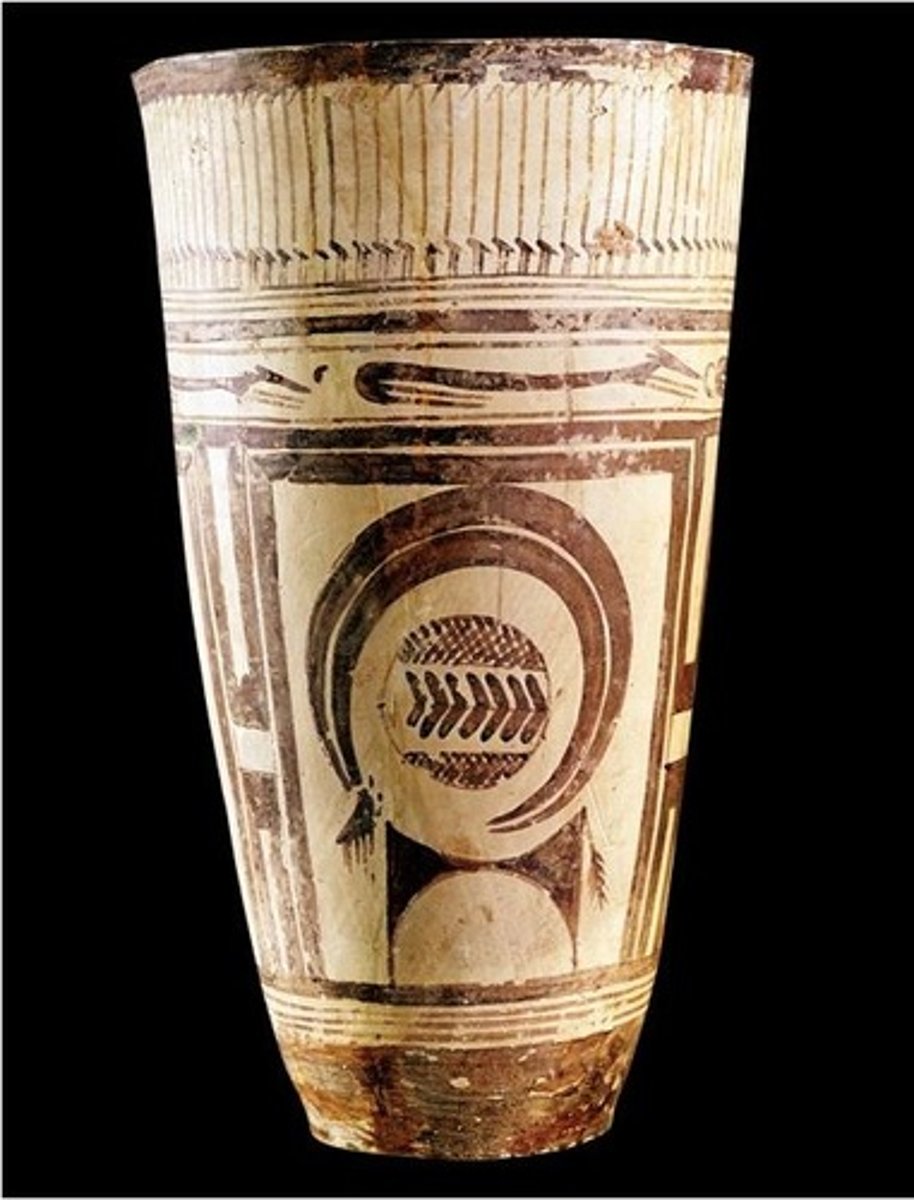
The vessel was made between
4200-3500 BCE
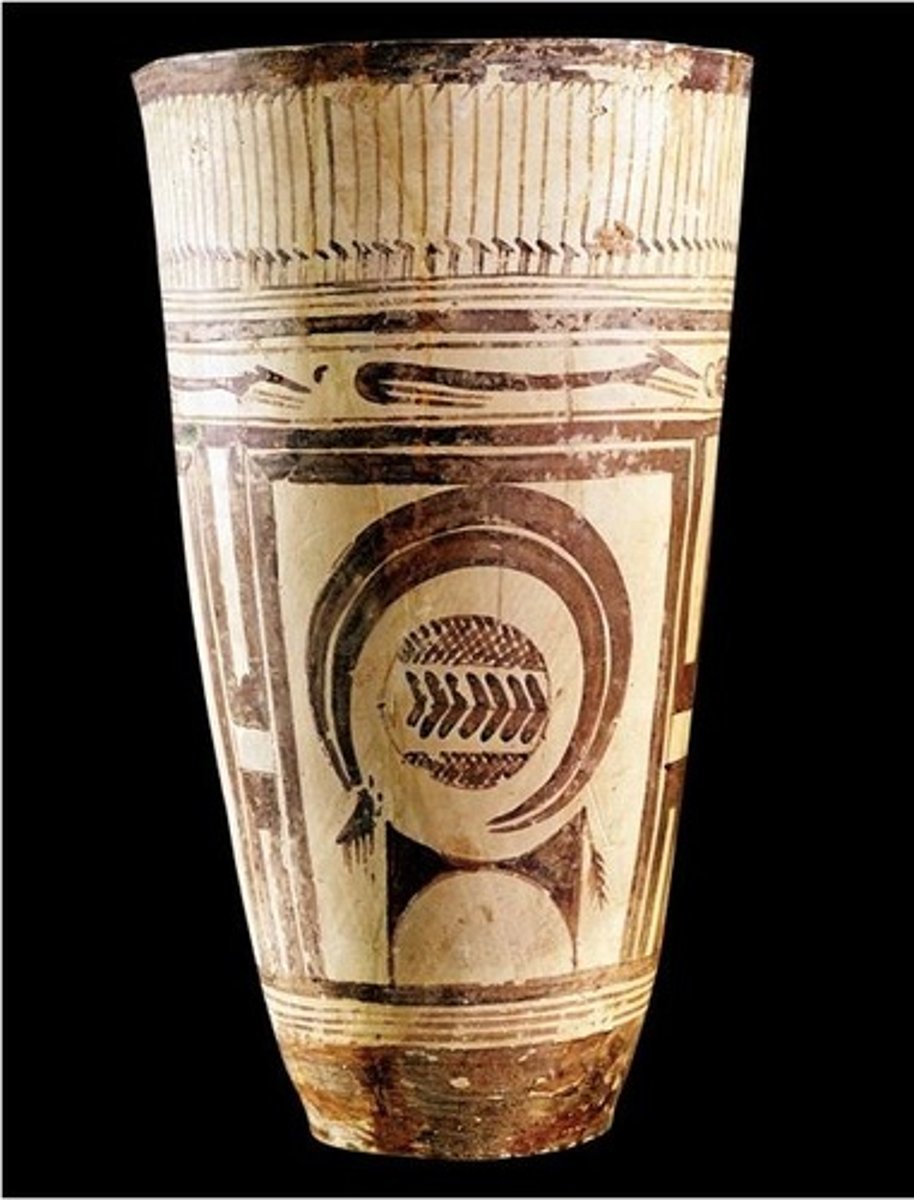
Scholars believe that the vessel was most likely used in a ritual context for which of the following reasons?
It was buried in a cemetery, underneath an artificial mound.
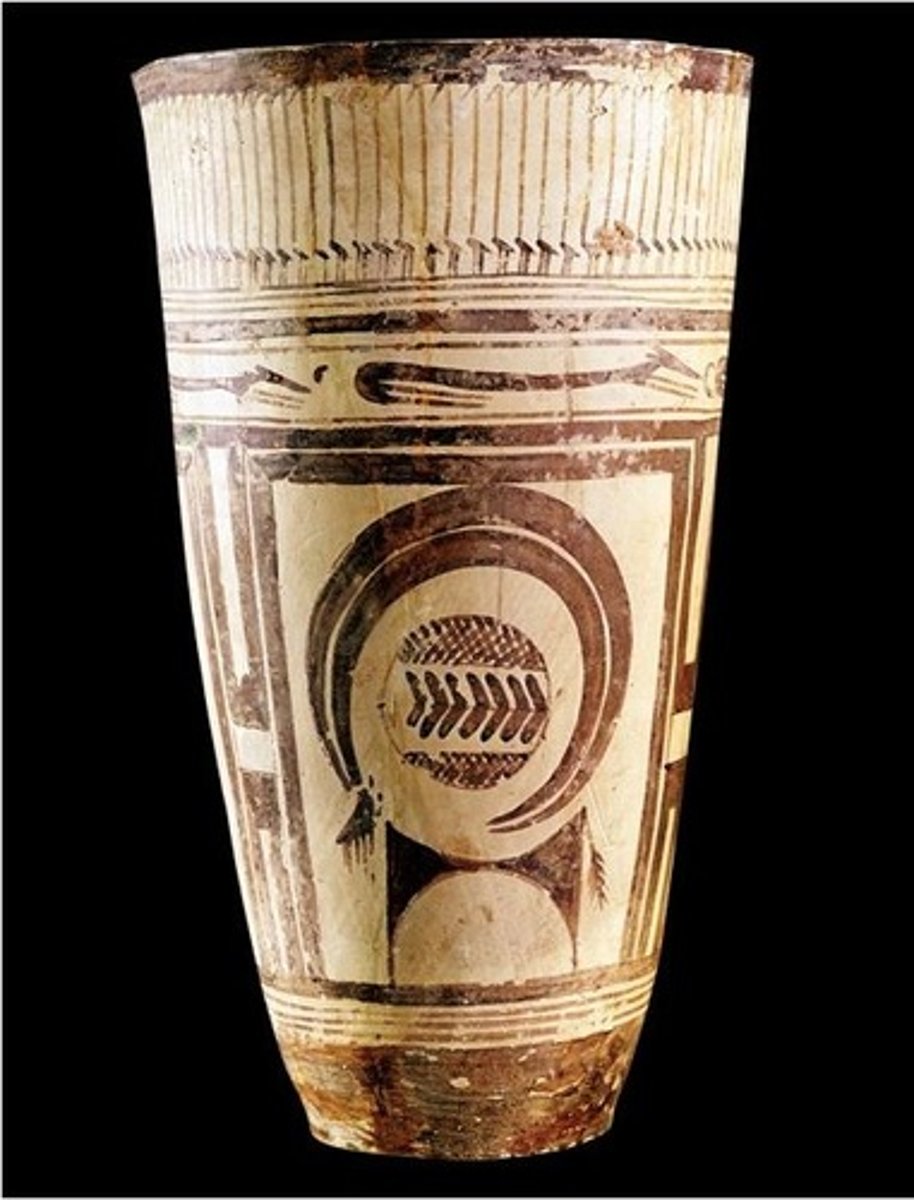
Scholars have theorized which of the following about the stylized animals painted on the vessel?
They represent both the wild and the domesticated animals of an agricultural society.
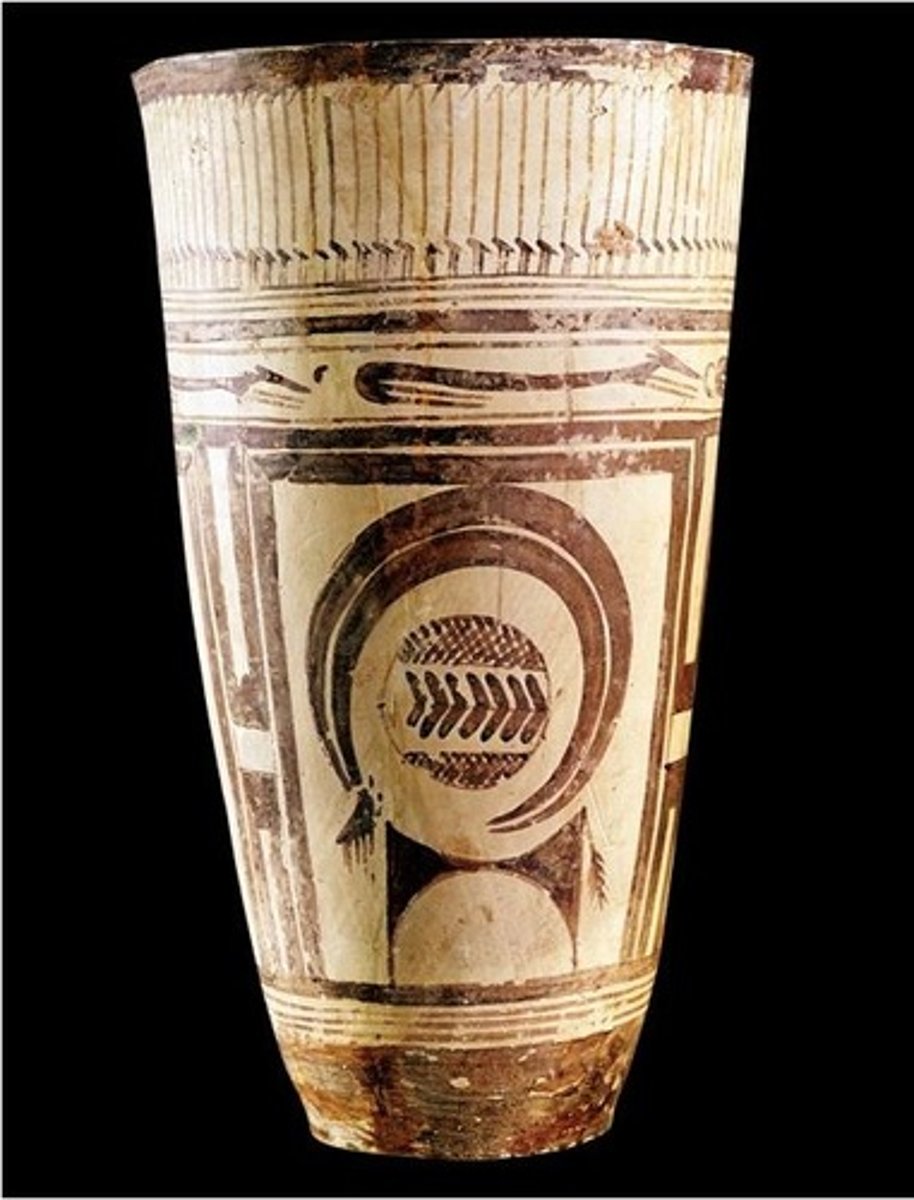
Some archaeologists have speculated that the Ambum Stone represented a totemic animal, while others suggest that the Ambum Stone was
a tool used to grind or pound substances
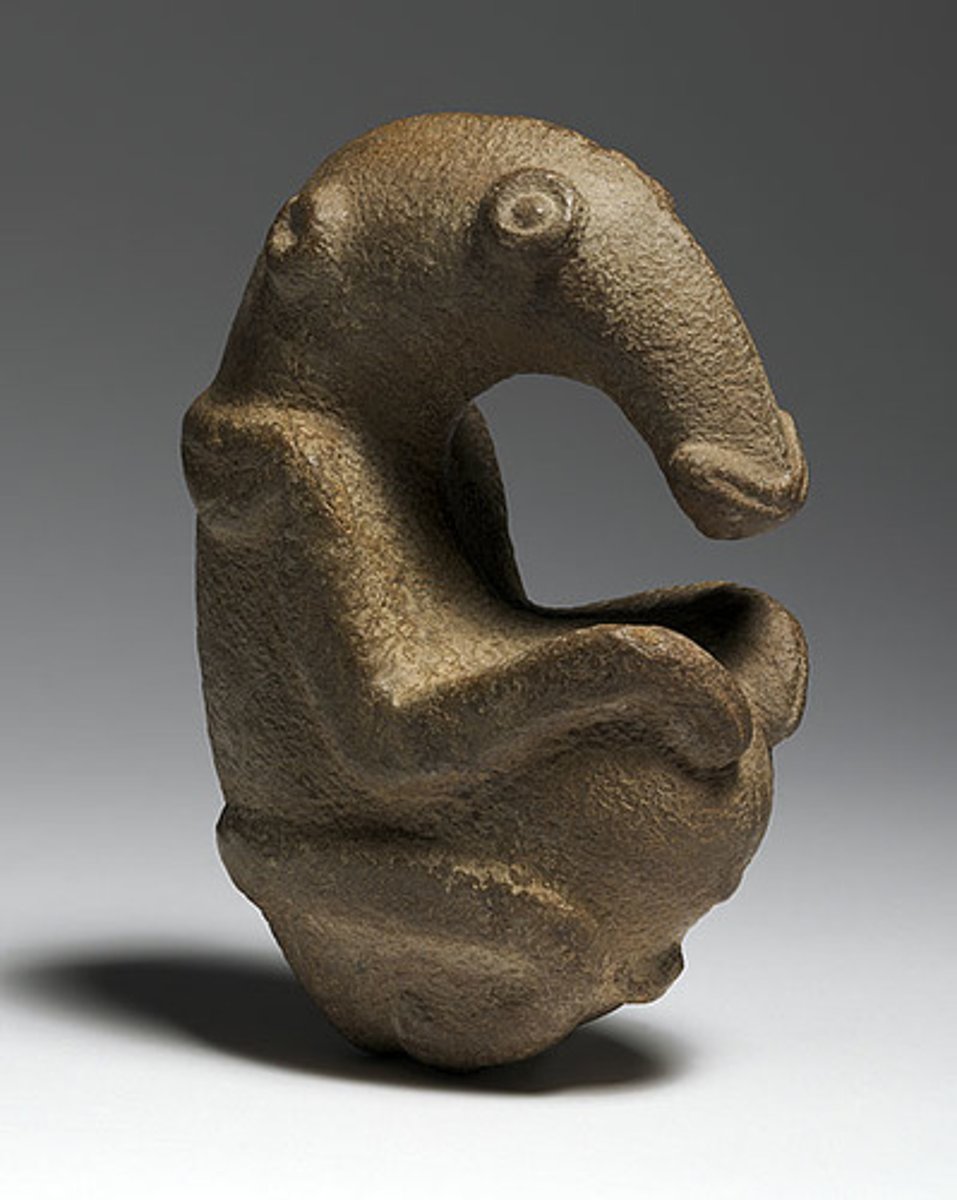
While most scholars agree that the specific purpose of the work shown can no longer be determined, some have speculated that the artist chose to use
a sacrum bone because it may have had a spiritual significance

The artist who created the Neolithic rock painting shown from Tassili n'Ajjer, Algeria, most likely drew lines and dots on the bodies of the figures to
represent physical ornamentation that was used in ritual contexts
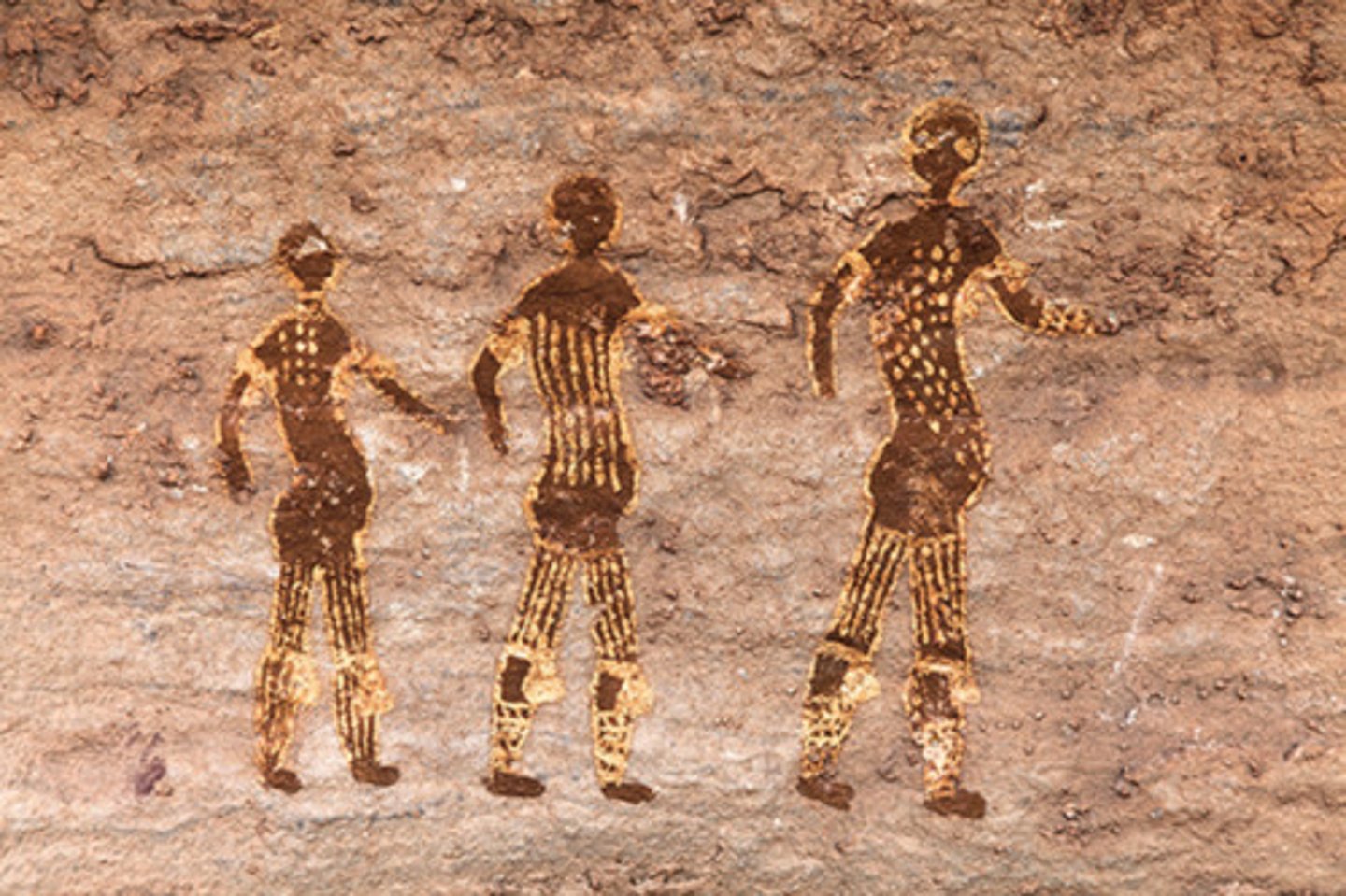
The detail of the cave painting shown is visually similar to those found in the Great Hall of the Bulls at Lascaux in that the
animals are depicted in profile to convey their distinctive qualities

The megalithic structure shown uses a similar building technique to that of Stonehenge, in that the stones are
arranged with upright vertical elements supporting a horizontal element

The anthropomorphic stele found near Ha'il, Saudi Arabia, is believed to have functioned as a
grave marker
The form of the Tlatilco female figurine best expresses a concept of duality through the
inclusion of two connected heads on a single body
The pattern of a human face on the terra cotta fragment from Lapita was most likely created using which of the following methods?
Incising
The Apollo 11 stones may have functioned as
an early form of portable art
Most scholars believe that the bluestones used during the early construction phases at Stonehenge were
transported with difficulty from a distant site, showing an ancestral connection to that region
Which of the following was one technique employed by Paleolithic artists at the Great Hall of the Bulls at Lascaux to create the clear lines of the animals' forms?
Using hands as stencils while blowing pigments to spray a surface
The form of the anthropomorphic stele shown is best described as
stylized
